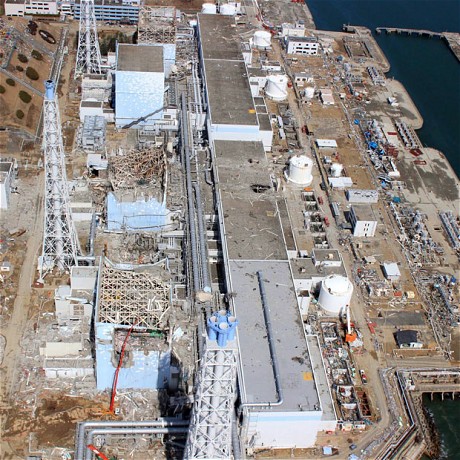
The mother of one of the men has admitted that the group have discussed their situation and have accepted that death is a strong possibility.
"My son and his colleagues have discussed it at length and they have committed themselves to die if necessary in the long-term."
Nicolas Sarkozy, the French president, said the world needed international safety standards on nuclear power by the end of the year as fears surrounding the extent of radiation leaks in Japan continued to grow.
Mr Sarkozy, on the first trip by a foreign leader to Japan since the devastating earthquake and tsunami on March 11, said he would call a meeting of the G20's nuclear power watchdogs to discuss safety regulations. "We must address this anomaly that there are no international safety norms for nuclear matters ... We need international safety standards before the end of the year."
The French president's proposal comes only days after Nick Clegg, the deputy prime minister, cast doubt over the future of nuclear energy due to the potentially high costs required to standardise safety.
Insisting that no more public funds would be made available, he said: "We cannot let the taxpayer be ripped off, which is what they always have been in the past."
Japan was on Thursday continuing its struggle to regain control over crucial cooling systems at four damaged reactors at the Fukushima Daiichi nuclear plant.
Fears over potential leaks from the plant in north-eastern Japan escalated after radioactive iodine was found in nearby seawater that is 4,385 times the legal limit. Radioactive contamination in groundwater underneath reactor No 2 has been measured at 10,000 times the government health standard.
The International Atomic Energy Agency said radioactivity safety limits had been exceeded as far as 25 miles away and urged the government to re-examine its exclusion zone in which residents are banned. Spot tests conducted by the watchdog at Iitate village, 25 miles northwest of Fukushima, showed readings twice as high as levels at which the agency recommends evacuation. But Naoto Kan, the prime minister, said there were no plans to extend the zone from the current 12 miles, affecting 70,000 residents There is a further "stay indoors" policy for a further 130,000 people who live up to 19 miles away.
Meanwhile, Japan asked trading partners at the World Trade Organisation not to "overact" by unnecessarily restricting the import of food produce.
A growing number of international food companies are shunning Japanese products amid fears of contamination, despite government assurances of safety.
Nearly three weeks have passed since the disaster, which left 27,000 killed or missing, a quarter of a million homeless and critical damage to the Fukushima Daiichi nuclear plant.
Forecast as the world's costliest natural disaster, the government is estimated to require over £75 billion in emergency budgets to cover costs for disaster relief and the biggest reconstruction project since the end of the second world war.
Criticism of Tokyo Electric Power, operator of the nuclear plant, has continued to mount following stiff government reprimands for earlier miscalculations of radiation figures. Yesterday, there were claims that the company's disaster contingency plans were far from adequate, according to documents obtained by the Wall Street Journal.
Designed to deal with only small-scale accidents, there were reportedly no details on drafting firefighters from Tokyo, the use of military resources or the borrowing of US equipment - all of which have been part of the company's crisis response.



This comes as no surprise to me as I said from the start that they were walking dead men. Zombies, dead, but didn't know it yet. These poor souls need our prayers for the gift of life they have sacrificed.